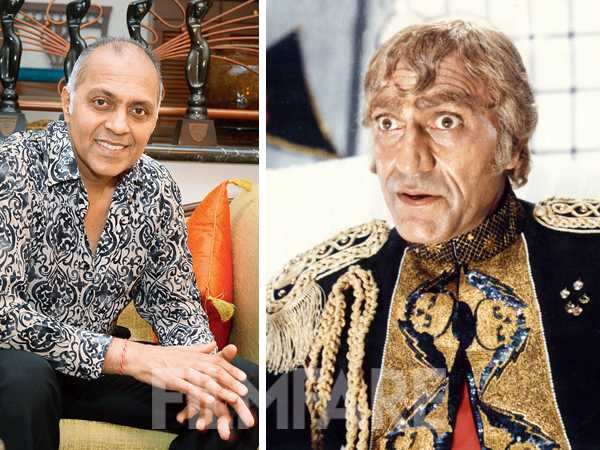
For Amrish Puri it was virtually the ‘Summer of 42’. The actor’s long simmering affair with acting found culmination when he reached his early 40s. And while his dream of playing the hero may have been thwarted, he went on to become the most loved villains of all time. He was also an artiste who redefined the dynamics for character actors. If he wowed the critics with his rough-edged portrayals in the art films of Shyam Benegal and Govind Nihalani, he won over the masala movie buffs with his louder-than-life histrionics. Puri with his reverberating baritone, piercing glance and dramatised dialogue delivery was a formidable figure against the hero. His costumes were all about prolific imagination and his oneliners ranging from, ‘Mogambo khush hua’ to ‘Dong kabhi wrong nahin hota’ are now part of cinema glossary. Puri even went ahead and worked in Steven Spielberg’s Indiana Jones And The Temple Of Doom and Richard Attenborough’s Gandhi, only to return and endorse the diversity that is Bollywood.
But behind the tough facade was a genteel person. “Upright and a true karmayogi,” as son and marine navigator Rajeev Puri describes him. “People from all walks of life loved him – even the police and the politicians.” Rajeev adds, “A decade after his demise, some film or the other of his is constantly playing on channels – out of the 350 he did, 200 were hits!” And when people till date come up to him requesting for a photograph because he’s the famed Mogambo’s (Puri's character in Mr India) son, Rajeev realises that Mogambo truly is larger than life... in fact beyond it...
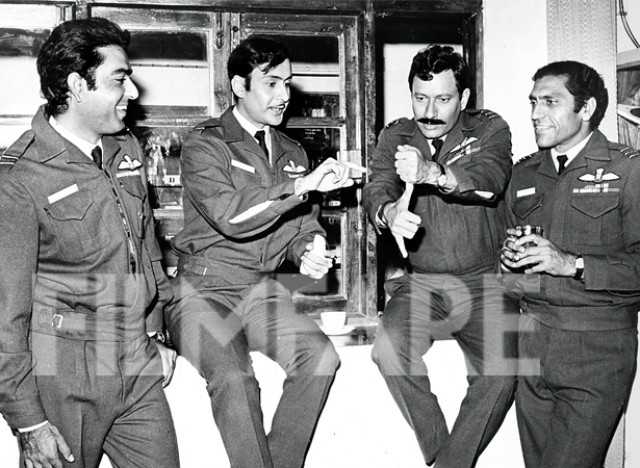
Parikshit Sahni, Vijay Anand and Amrish Puri in Hindustan Ki Kasam
ACT OF PASSION
Dad was born in Naushera in Punjab. He graduated from the BM College in Shimla, Himachal Pradesh. He was a leader of the RSS youth wing there and that explains why he remained a stickler for discipline and punctuality. In the ‘50s, he moved to Mumbai and found a job with the Employees’ State Insurance Corporation (ESIC). There he met my mother Urmila, a Konkani, and married her. His elder brothers Chaman Puri and Madan Puri were also actors. In fact, we lived with Madanji at Kings Circle for a few years before we shifted to our Santacruz home. Dad’s passion was acting. He worked during the day and in the evening did amateur theatre with Ebrahim Alkazi, Satyadev Dubey, Vijay Tendulkar and Girish Karnad among others. In fact, Satyadev Dubey and he began Hindi theatre in Mumbai with plays like Hayavadana and Yugati winning him much applause. He became well known as a stage actor, which led to him doing ads and finally films in the ’70s.
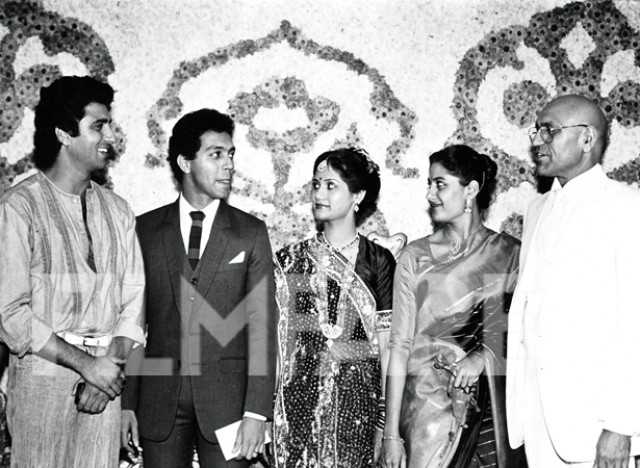
A file picture of Rajeev's wedding: Raj Babbar, bridegroom Rajeev Puri with bride Meena, Smita Patil and father Amrish Puri
ON SCREEN
The first time we felt that times were changing was when dad went to Jaisalmer to shoot Reshma Aur Shera (1971). It was an Ajanta Arts film directed by Sunil Dutt. A lot of new actors were being featured – Raakhee, Amitabh Bachchan, Ranjeet… Dad brought home pictures of the shoot. I must have been around 12 then and was excited watching them.
Another film, which was to change his life was Girish Karnad’s Kannada film Kaadu (1973) where he played the villainous village headman. Girish Karnad handed his Filmfare Best Director trophy to dad as a gesture of appreciation. Dad was then noticed by Shyam Benegal, who featured him in his films Manthan, Nishant and Bhumika through the ‘70s. He also became part of Govind Nihalani’s critically acclaimed films Party, Vijeta, Aakrosh and Ardh Satya. Dad had a flair for roles that betrayed authority and rode the crest of new wave cinema with his earthiness.
In 1980, director Bapu roped in dad to play Duryodhana in Boney Kapoor’s Hum Paanch. Soon other filmmakers started offering him villainous roles in commercial films too. After Feroz Khan’s Qurbani (1980) there was no looking back.
One film that took him to the acme of his career was Mr India (1987). As the part menacing part comical Mogambo, he won fans across audiences. Mogambo was a favourite with kids because he was a comic-strip like character. At every function he attended, dad was asked to say the Mogambo dialogue. First Amjad Khan as Gabbar Singh in Sholay (1975) and later dad as Mogambo gave villainy a new status. He went on to become the highest paid villain. Earlier character actors were paid paltry sums as compared to the hero.
Dad’s career spanned three decades and around 300 films. Among these his favourites remained Koyla, Vidhaata, Pardes, Chachi 420, Ghatak, Ghayal, Damini, Meri Jung and Saza-E-Kala Pani.
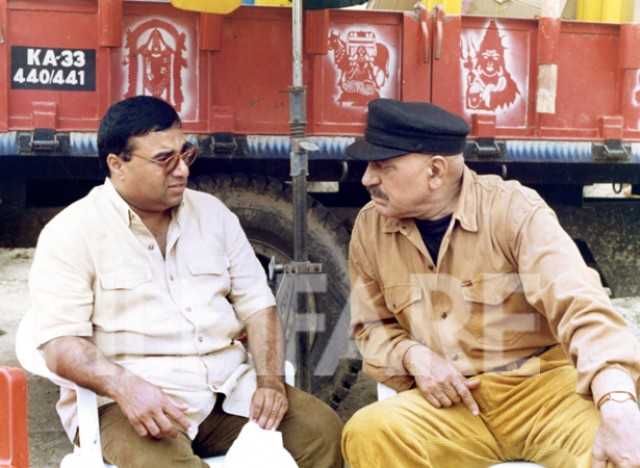
Director Rajkumar Santoshi with Amrish Puri on the set of Ghatak
OFF SCREEN
My sister Namrata and I remember dad as someone who was larger than life, someone who was strict but never unreasonable. Someone who urged us to speak the truth. He urged us to follow the three Ps - patience, perseverance and persistence.
He was realistic and that’s why he insisted that I seek a secure profession. He once told me, “See, acting is my first love. I’ve been polishing my act for years. It took me long to establish myself. There’s no need for you to be awed by the profession. You needn’t risk your future. You must complete your education.” That’s why, I joined the Merchant Navy in 1978. I sailed for 11 years. It used to be fun watching his films on the ship.
As an actor he had a great ability to switch on and off. He was not fond of smoking, drinking or parties. His idols were Dilip Kumar, Motilal, Balraj Sahni and Amitabh Bachchan. He worked with Raj Kumar, Dilip saab, Amitji… he was like a student in front of them and had absolutely no ego. Also, a lot of youngsters began their careers with him like Ajay Devgn in Phool Aur Kaante and Shah Rukh Khan in Deewana... He was easy to work with except that he had no patience with people who didn’t respect time.
Dad was particular about having nutritious food. He was largely vegetarian but enjoyed fish. He practised yoga and was an early riser. He was one of the first members of Talwalkars gym in Mumbai. Also, he preserved his vocal chords. He stayed away from fried stuff. He’d just have a piece of sev puri… when we insisted. Once he happened to shave off his hair for a Rakesh Kumar film. He was told his personality looked better that way. The bald look appealed to Steven Spielberg, who then offered him Indiana Jones And The Temple Of Doom, where he played Mola Ram. Dad realised that with a shaved head, he could try different get ups. He was well-versed with the art of make-up and wigs. He knew the concentration of hair that a hairpiece for a 50-year-old character or a 60-year-old character would require. He also spent time with the tailors – in fact, directors often asked him to work on his costumes. He’d pick his own ties, bows, shirts… for a role. He enjoyed observing people as he drove in his car. He’d keenly watch the hawaldar, the fit of his shirt, how worn out his shoes were… which helped him play one in Gardish.
Dad loved watches... he owned all the possible brands. He was intrigued by its technology and the way each piece was assembled. Each time he’d go abroad, he’d visit a showroom and call me up excitedly, “Tikoo (my pet name) I’ve bought such a handsome looking watch!” Another fascination he had was for Mercedez Benz cars. He’d keep buying the latest editions. We have maintained his 1983 model in showroom condition.

Amrish Puri with wife Urmila
THE LOVED VILLAIN
He received a huge fan mail of around 50 to 60 letters a day. Some fans would constantly sit on the footpath outside our home to catch a glimpse of him. Women also wrote to him. Many were crazy about him. But he was not a young actor. By the time he got recognition he was 45. My mom did feel possessive with all the attention being showered on him. But she understood. He was at an age where he knew what to absorb and what to keep away from. He was cautious. He did have shades of romance in his role opposite Farida Jalal in Dilwale Dulhania Le Jayenge. That subtle equation suited his age. His female co-stars liked him because he was protective about them. He’d check with the production guys whether they were comfortable or not. While he was being pampered, he wanted them to enjoy those facilities too. He was like a father figure to junior artistes too. He’d call up the producers who defaulted on their payments.
Once they were shooting at Amritsar railway station for Gadar – Ek Prem Katha. Huge crowds had gathered and there was so much noise that the shooting couldn’t proceed. Sunny Deol wanted to leave. Dad took over and in his baritone said, “Allow us to do our work. I want pin drop silence!” There was a hush and the shooting resumed.
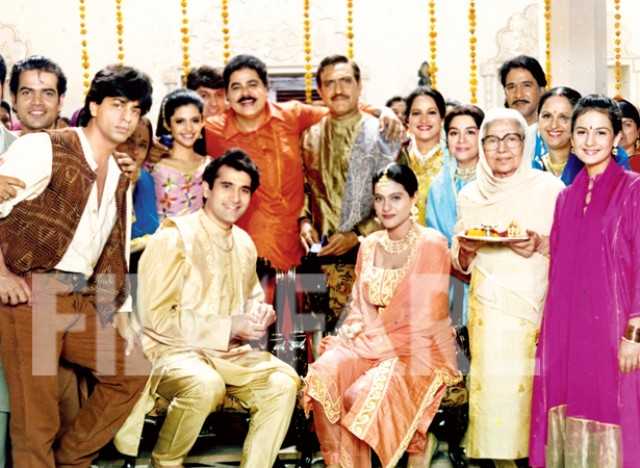
Shah Rukh Khan, Parmeet Sethi, Satish Shah, Amrish Puri, Kajol and Farida Jalal in Dilwale Dulhania Le Jayenge
THE END
Guddu Dhanoa’s Jaal The Trap for (2003) was shot in Himachal Pradesh. Unfortunately, dad met with an accident there. He suffered serious injuries on his face and eye. He lost blood and consequently had to undergo blood transfusion. I guess, something went wrong there because in the coming years he developed a blood disorder (myelodysplastic syndrome). It began with weakness and reduced appetite. When he came to know about the fatality of his illness he was shaken. But he had an iron will. He wanted to project a strong side to the world. He knew that at 72 there was little that he could repair and that his graph was going down. Jo hona hai woh hoga – that was his stance.
Dad was keen to complete the projects on hand, even though he was in pain. His illness was detected in 2003 and by December 15, 2004 he had finished all his films - Kachchi Sadak, Mujhse Shaadi Kaoroge, Hulchul, Ksna and Aitraaz despite being unwell. He was at home for a brief period. But he didn’t want to remain confined to the bed. When asked how he was feeling he’d just say, “Kal se behtar hoon.” Then one day he had a fall at home and suffered a massive brain haemorrhage. He passed away on January 12, 2005.
Dad had served as the President of CINTAA (Cine and TV Artistes Association) for six years before his demise. As a mark of respect the industry remained shut for two days. The whole road from our house in Juhu to the electric crematorium at Shivaji Park was full with people. There were onlookers perched on trees and buildings.
As a tribute to him the Times Of India carried a piece, which was titled, “No guns only roses.” I recall his famous dialogue in Pardes, “What’s the bottomline?” Well, for me it would be never doing anything that would disappoint him.

Roles he played
Bhumika (1977)
Played Vinayak Kale, a chauvinistic businessman who keeps actress Usha (Smita Patil) as his mistress. He gives her all but takes away her freedom.
Aakrosh (1980)
Law graduate Bhaskar Kulkarni (Naseeruddin Shah) takes on his conniving mentor Dusane (Amrish Puri), who protects the powers-that-be.
Ardh Satya (1983)
Puri portrays the abusive father of Om Puri, whose repressed angst affects his life and career later.
Mr India (1987)
As Mogambo, the evil scientist, in the Anil Kapoor-Sridevi starrer, Puri reached an iconic status.
Indiana Jones and the Temple of Doom (1984)
He plays the demonic priest Mola Ram, who sacrifices humans and enslaves children.
Nagina (1986)
He is the snake-charmer Baba Bhairo Nath with Sridevi as the nagin.
Suraj Ka Saatwan Ghoda (1992)
He plays Maheshwar Dalaal, an oppressive father, who damages his son’s psyche forever.
Dilwale Dulhania Le Jayenge (1995)
Puri played the domineering father of Kajol, remembered for his climax dialogue, “Ja Simran, jeele apni zindagi!”
Karan Arjun (1995)
As the wicked Thakur Durjan Singh, who kills Karan and Arjun’s father and later both the brothers, Puri is impressive.
Chachi 420 (1997)
His lecherous character hits on his son-in-law Kamal Haasan disguised as a woman.
Gadar: Ek Prem Katha (2001)
Plays the autocratic father of Ameesha Patel unwilling to accept his Hindu son-in-law Sunny Deol.
Nayak (2001)
Is the ruthless CM, who ignores the riots to protect his vote bank.
Hulchul (2004)
Essays the woman-hating father who forbids his sons from getting married.
Filmfare Awards
Best Supporting Actor - (Meri Jung, 1986)
Best Supporting Actor - (Ghatak, 1997)
Best Supporting Actor - (Virasat, 1998)
Amrish Puri’s Famous Dialogue
Hamara aadmi pehle zindagi se alag hota hai, baad mein humse (Qurbani, 1980)
Naya naya hosh hai aur naya naya josh hai (Vidhaata, 1982)
Mogambo khush hua (Mr India, 1987)
Dong kabhi wrong nahin hota (Tahalka, 1992)
Aaisi nass dabaoonga ki cheenkh nikal jayegi (Damini, 1993)
Premi hai, pagal hai, deewana hai (Diljale, 1996)
Itne tukde karoonga ki pehchana nahi jayega (Gadar, 2001)
Arjun kabhi marte nahi, Arjun ladte hain! (Garv, 2004)


SHOW COMMENTS